Hi Gram,
Today is the day when we see what we came here for, Angkor Wat! We have been having an amazing time here already and so very glad this was our first stop. The first class hotel service, the fun of riding in the Tuktuks, all the glitz and showmanship of Pub Street, our morning walks, the circus, lounging by the pool, our couples spa day, being treated so well at each restaurant, learning and observing at the zoo, coasting through the mangroves hugging each other, and all the laughter and joy and memories we got from all of that has been worth 10x the effort and cost we put into it. It actually took me some thinking just now to remember all the amazing things we’ve done in the last few days! I’m glad that I’m taking pictures and writing to you so I can come back and re-read these stories later.
Anyway, we got up with the alarm today in anticipation of our adventures at Angkor Wat. We did a shorter walk so we could get back to the hotel gym and do a basic workout. I haven’t been exercising – at least not structured – as much since leaving Hua Hin and I want to make sure I keep up with it. It felt good to do some basic stretches and body weight exercises to start the day. After a light breakfast, I packed a bag real quick, then we headed to the lobby to wait for our tour bus. We sat comfortably on the couch, feeling as fancy as ever, until the bus arrived and whisked us away. We joined a tour of about a dozen people who introduced ourselves from countries or cities in Europe and America, with one gentleman simply from South America.
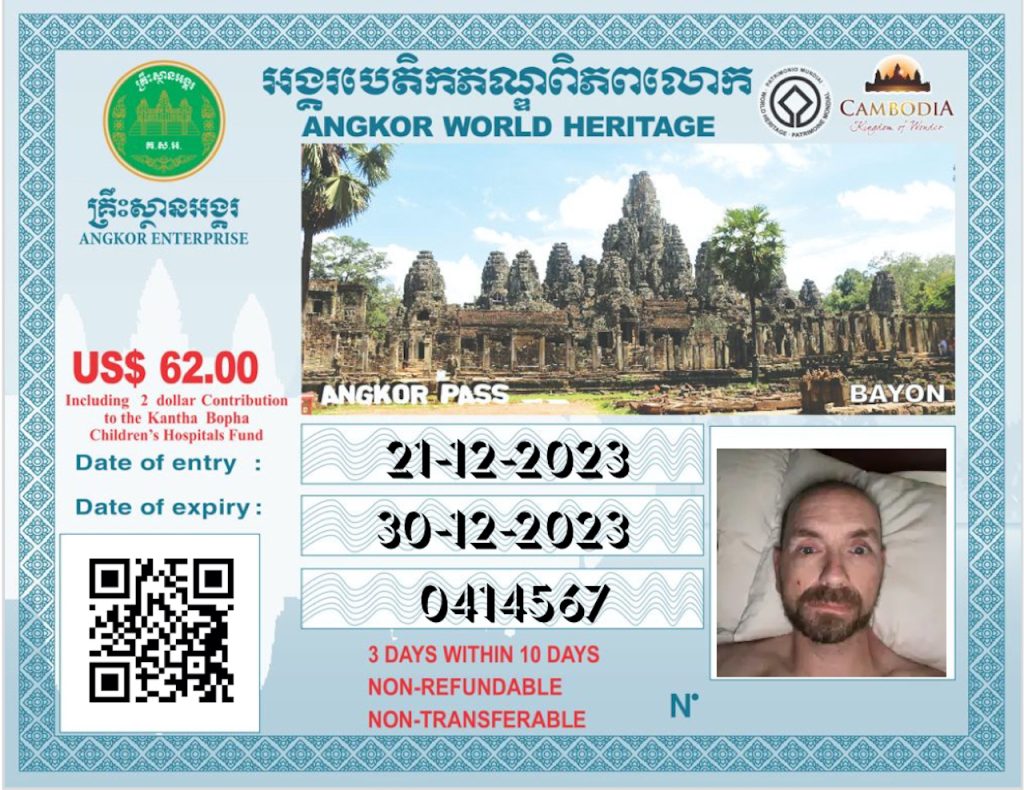
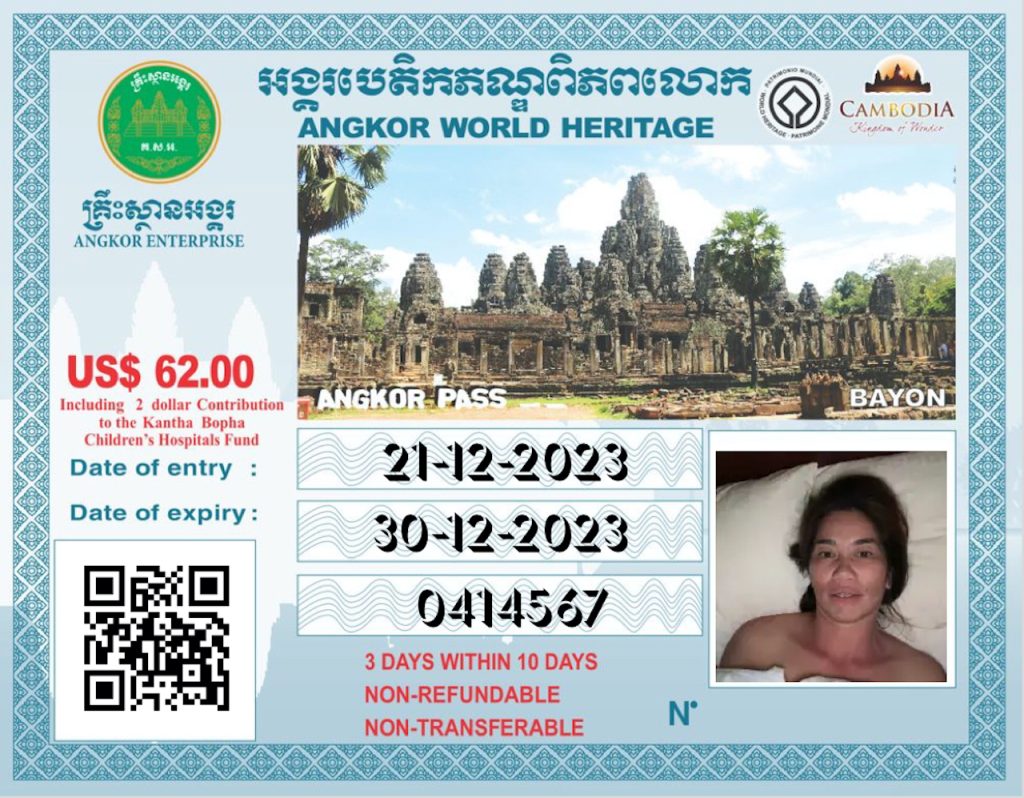
The first stop was a checkpoint to make sure everyone had a ticket to enter the park. Now, a little side story… We bought our tickets in bed last night which required a photo. The website didn’t recognize a face in any of the selfies saved to my phone so I just snapped a candid picture in bed, with bad lighting and wrong angles. I figured this picture will only be seen the first time we enter then never seen again, so who cares about the picture, right? Well, our tour guide told us that we would have the tickets checked at each temple for the next two days. Fast forwarding a bit, I’ll tell you that it gave us a good laugh each time we showed them with a shrug. A few minutes later, we arrived at the first temple, where our tour guide took the first few minutes to give us some foundational knowledge. We learned that the Hindu religion built their temples tall, and tried to locate them at the top of mountains or high elevations if possible. Their goal was to reach as close to the heavens as possible to make it easier to communicate with the gods and to ascend at the end of life. Buddhist temples are built low and wide because the Buddhist temples were designed as schools or sanctuaries where each person can reflect and focus on a separation from the material world. Buddhist temples had many individual chambers where monks and students could isolate and meditate. Now, before I go any further, a little disclaimer – I am repeating what I think I remember hearing. As you know, my brain damage leaves gaps in my memories that it later tries to fill in to make everything weave together. If any of this doesn’t line up with what you know about Buddhist or Hindu teachings or beliefs, I would discard what I’m saying and rely on your own knowledge. I don’t mean any offense to those whose beliefs I mention. Okay, with that disclaimer handled, back to the show.
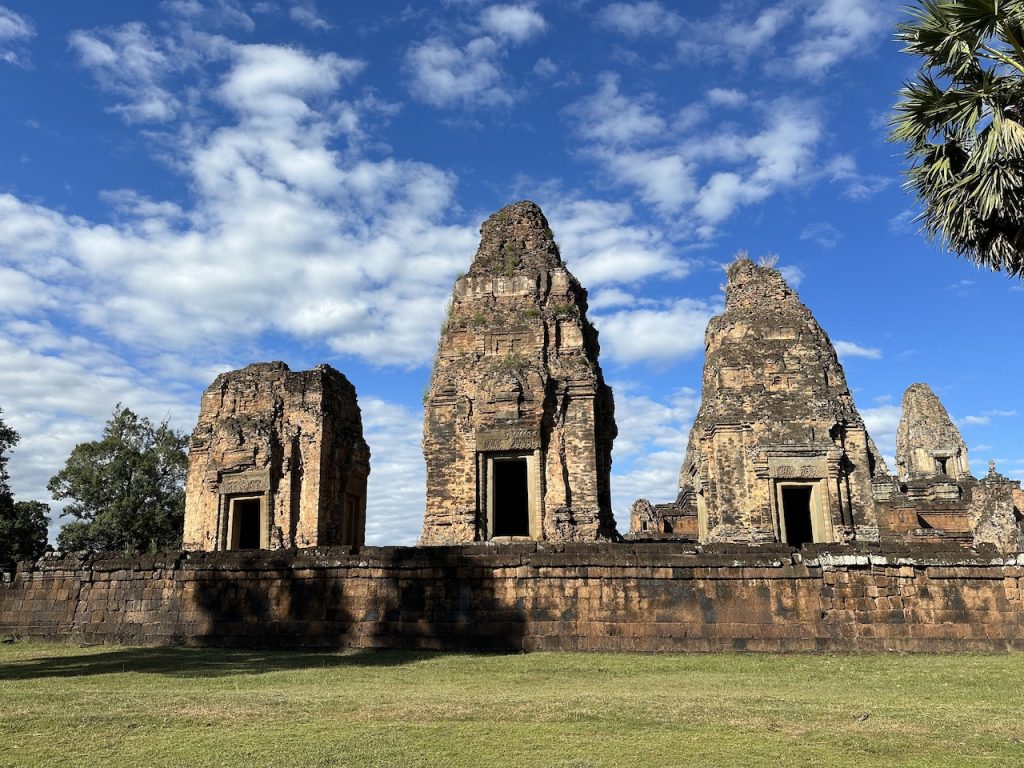
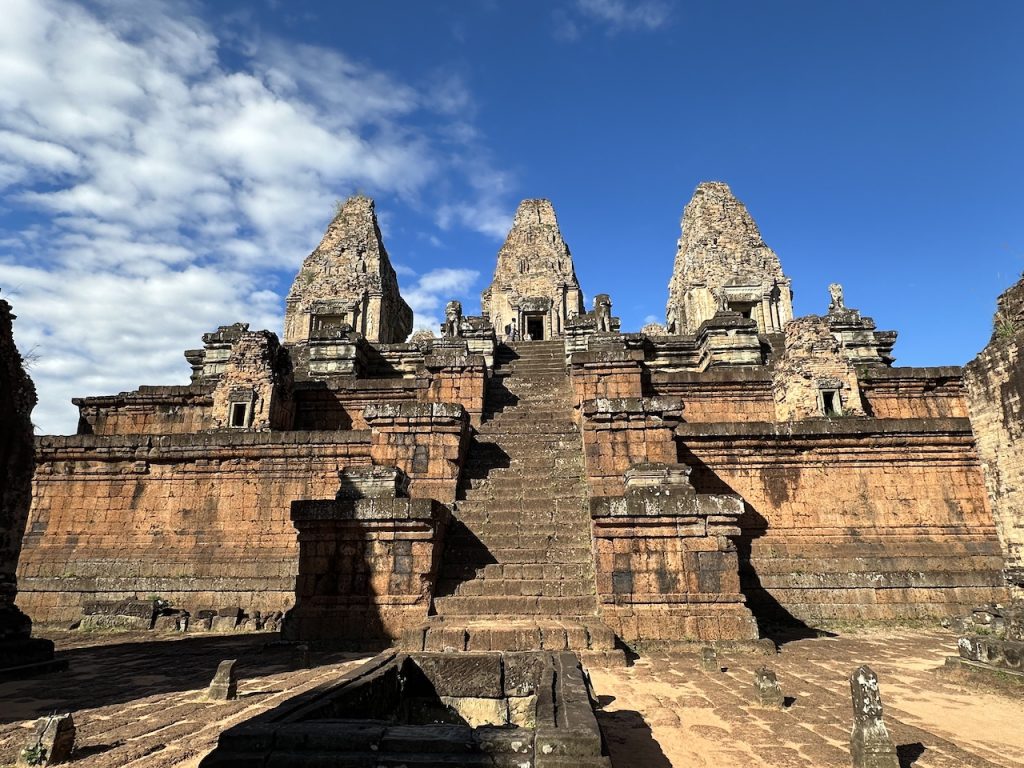
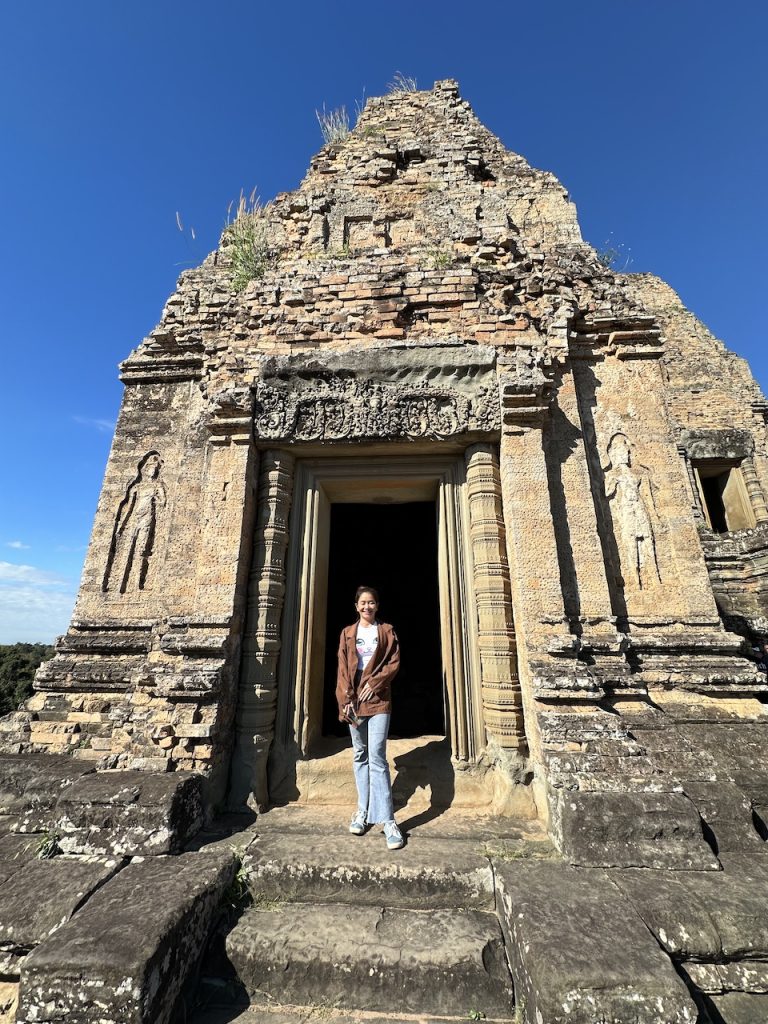

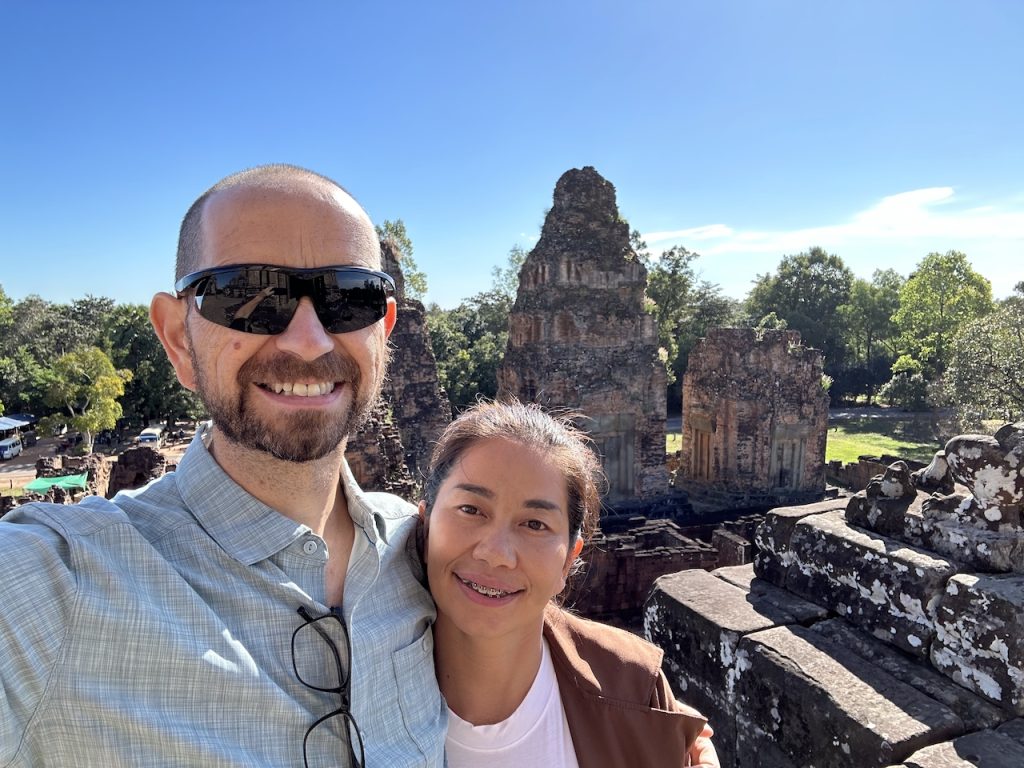
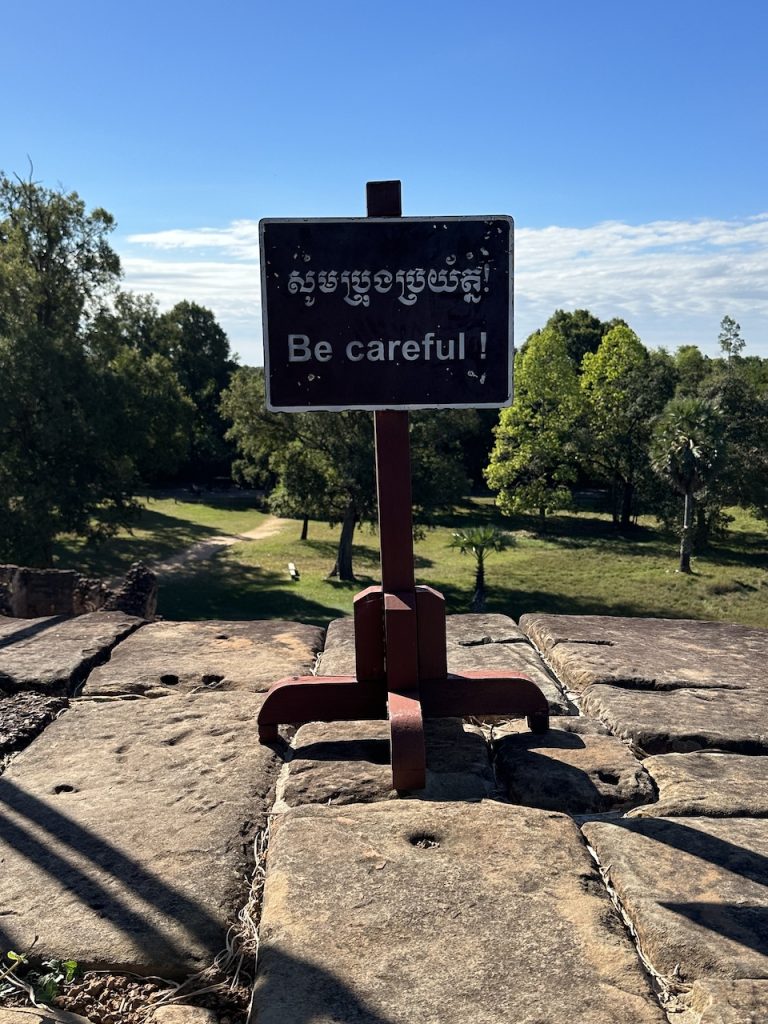

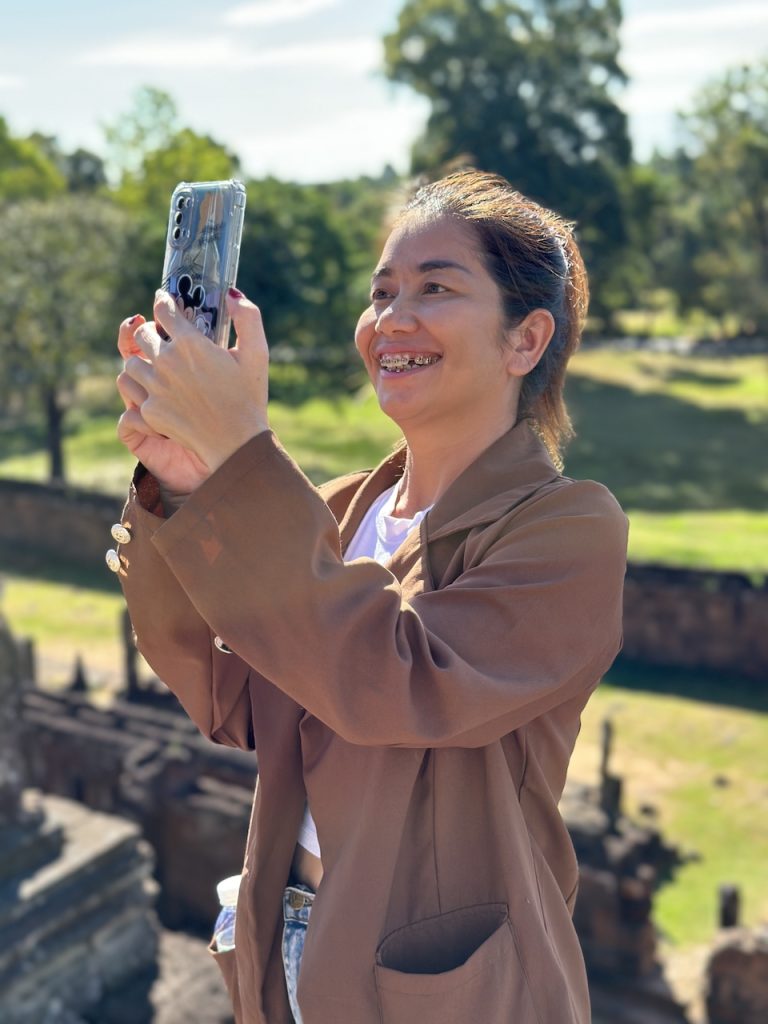
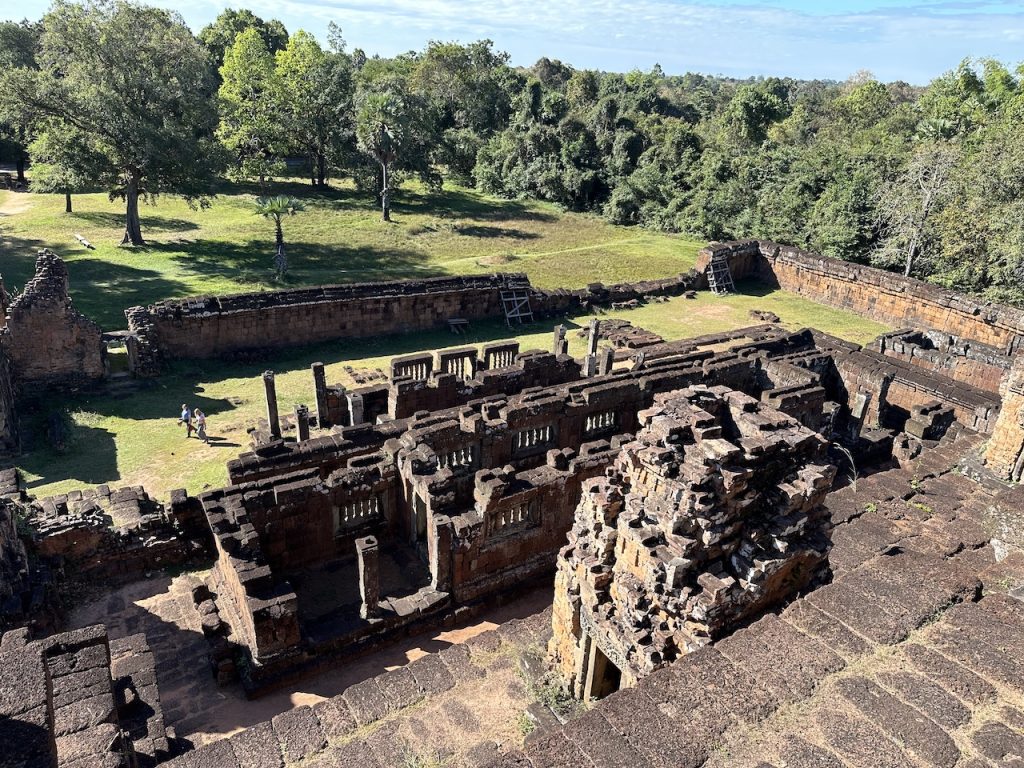
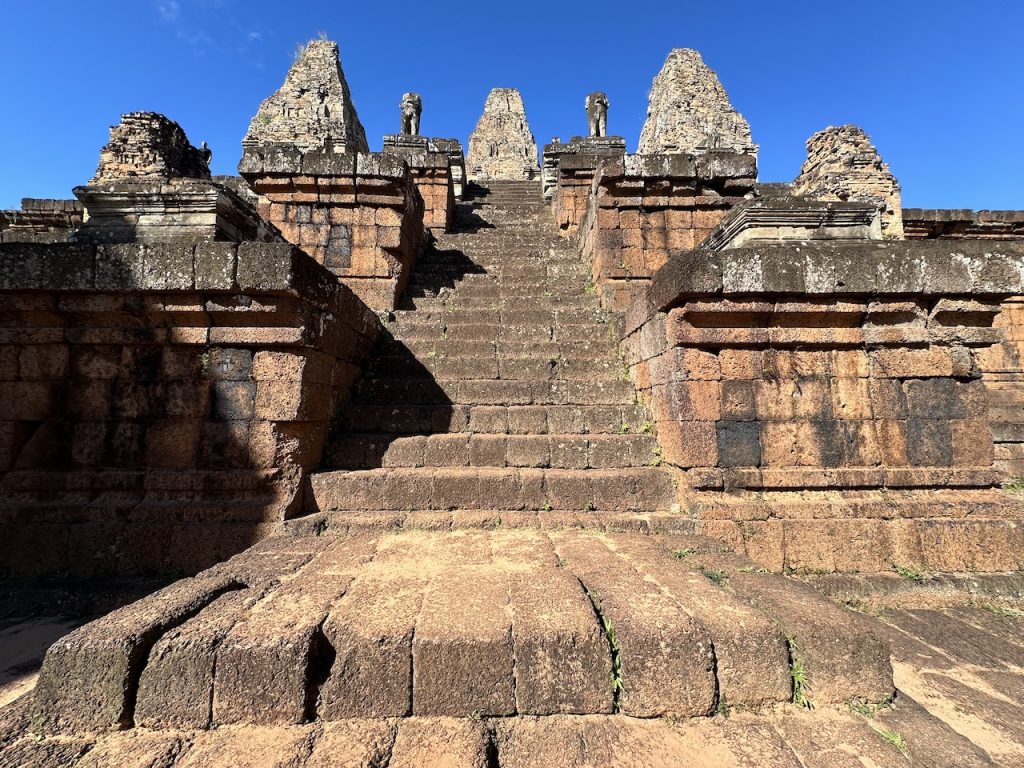

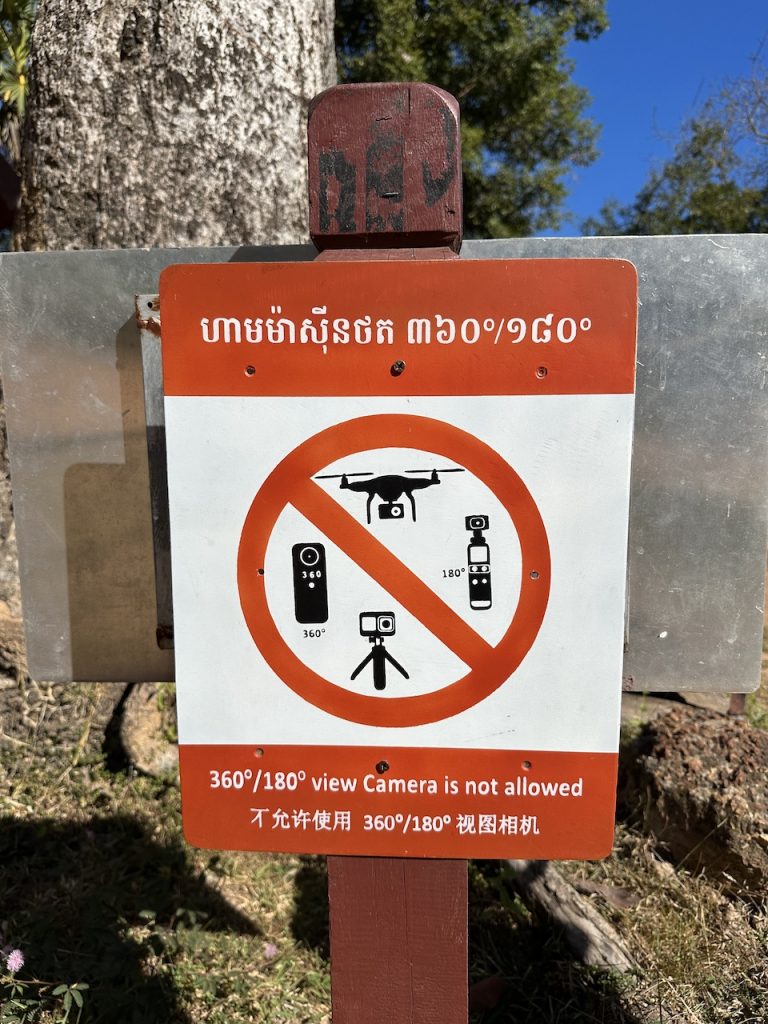
We walked through the first temple with wonderment and awe. These temples were built sometime between the 10th and 12th centuries when the Angkor Empire was thriving. Each successive king harnessed the labor of many slaves and quite a few animals over decades to build each temple. There have been over four thousand temples discovered so far, and new ones are discovered more often than you would think in the year 2023. While we see broken stone, corroded and worn edges, and uneven floors, the imagination can be harnessed to see the crisp clean lines, smooth floors, and walls adorned with gems and gold. Where we see statues that are crumbling or missing large sections, we have to remember that centuries of conflict resulted in beheading statues as a king with a different religion came to power. We need to remember that intricate carvings were chiseled away to wash away the previous beliefs, vegetation split stones, and looters stole anything of monetary or moral value. The scale of what was accomplished, hauling stone from distant quarries, is nothing short of fascinating. We learned that waterways were constructed so stone could be floated on bamboo rafts so the elephants and humans could pull it along. Latitude, location, and direction were painstakingly calculated so entrances and rooms were precisely aimed North, South, East or West based on what those directions represented. Rooms were designed so the sun shone directly down onto the center at noon on the equinox so the king or family member could ascend to the heavens. Not to make light of it, but I’ve seen descriptions like that in movies and thought “oh, that’s fantasy” but no – that stuff was really done. The attention to detail was just mind boggling.
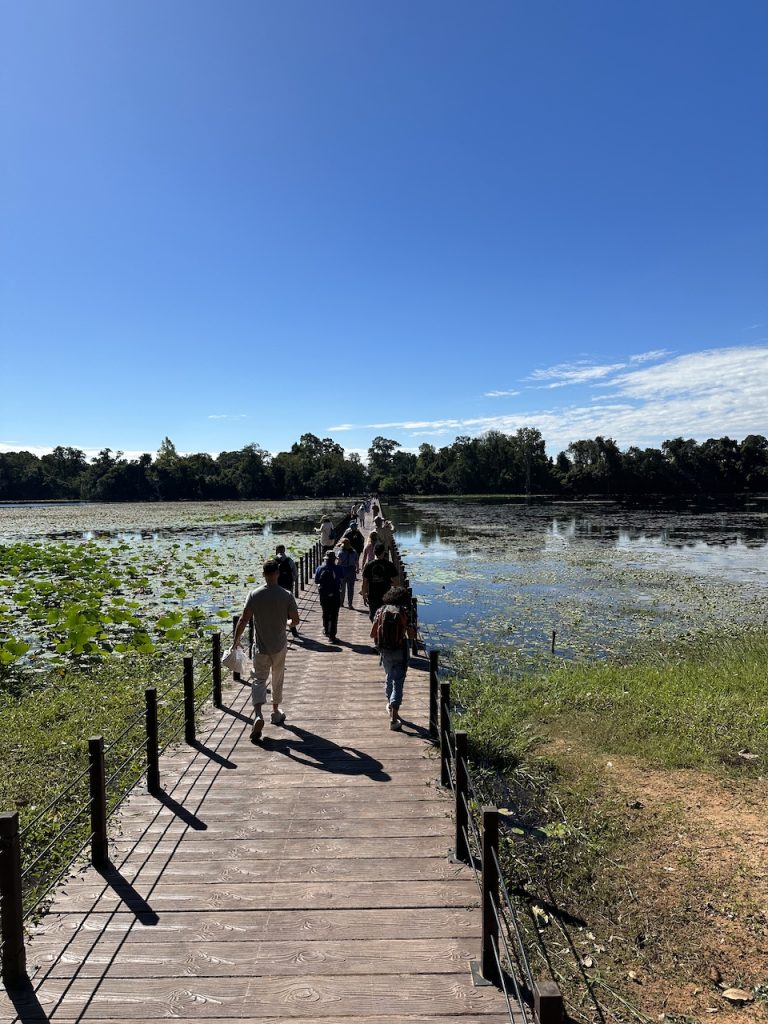
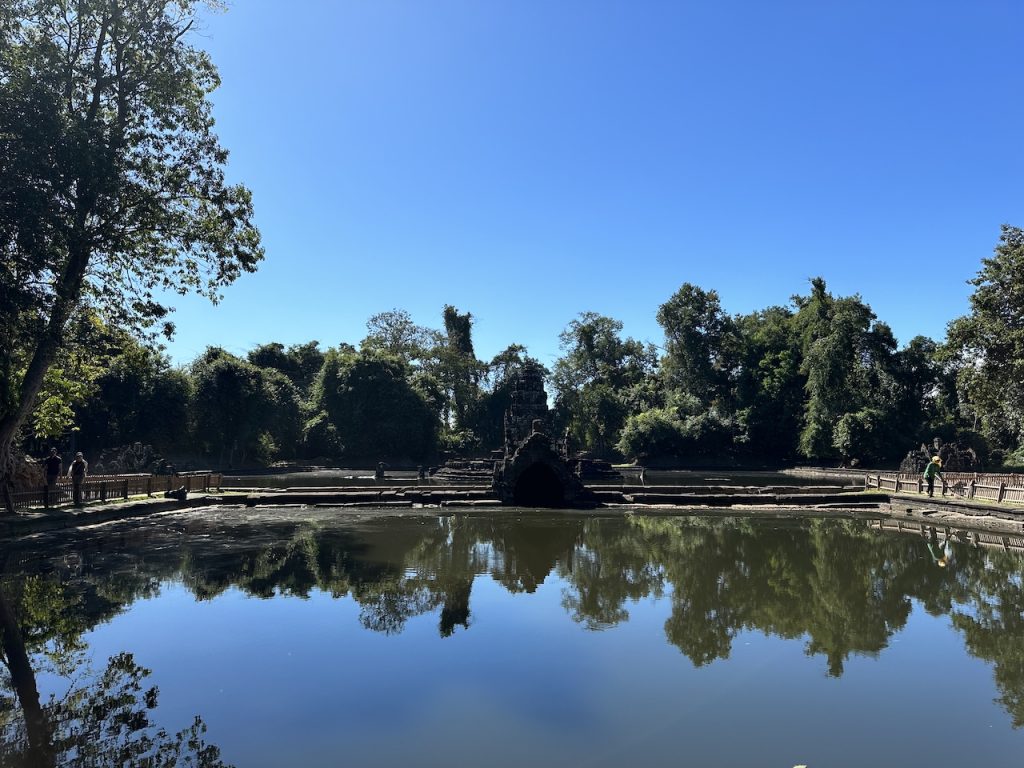
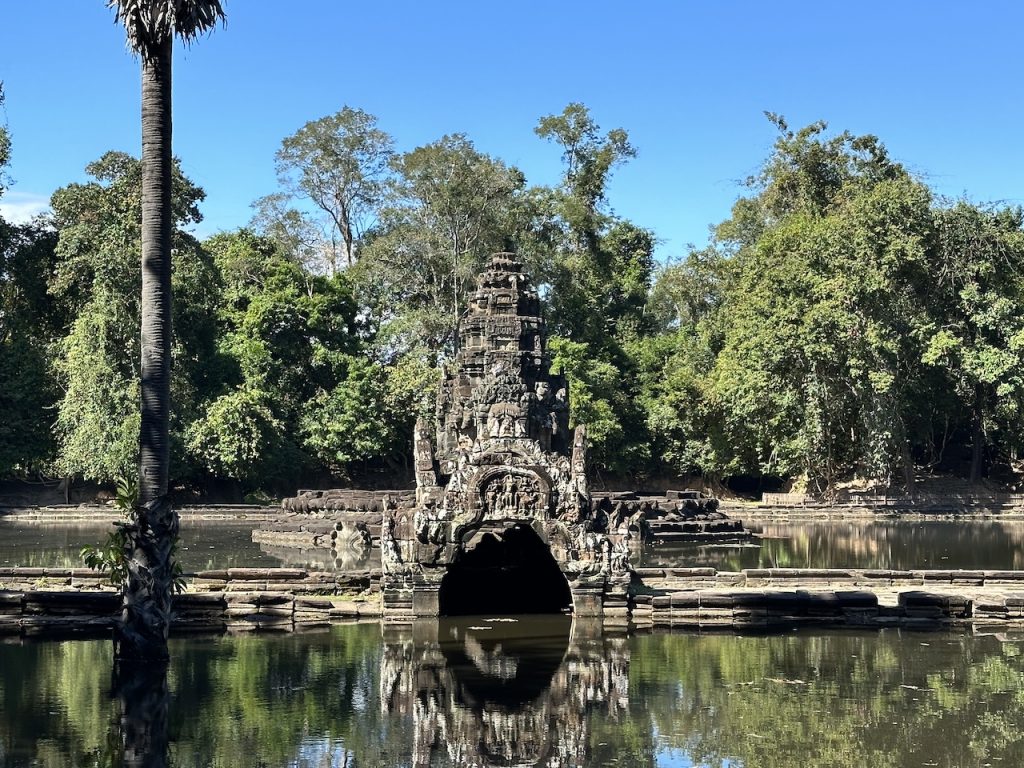
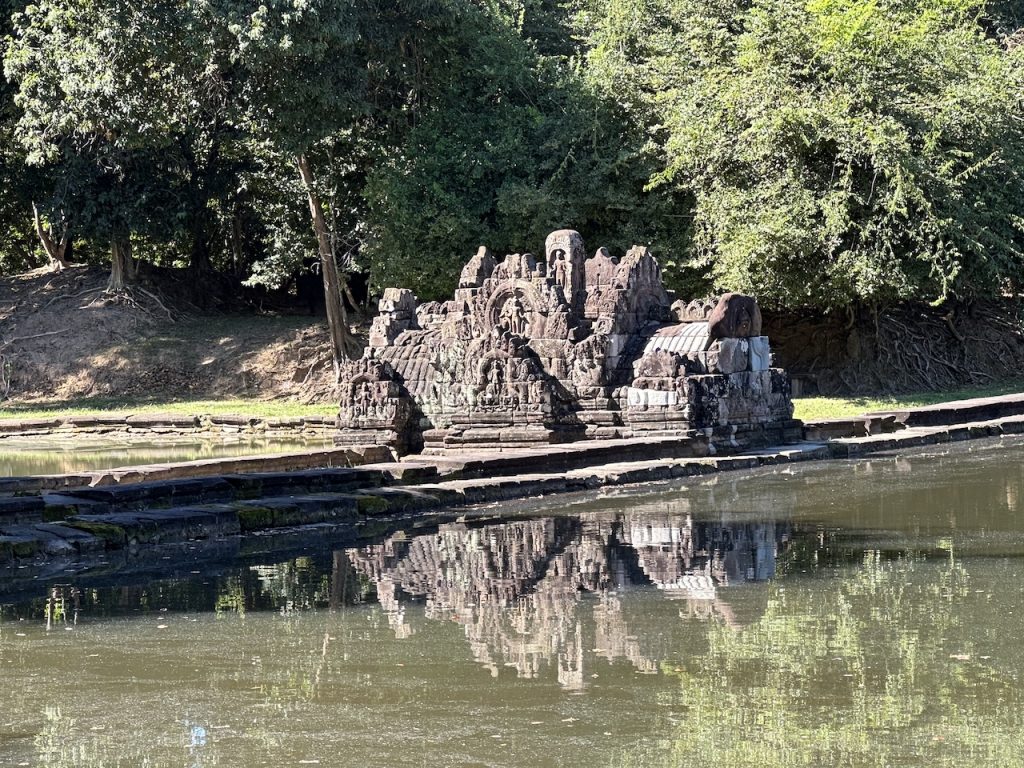
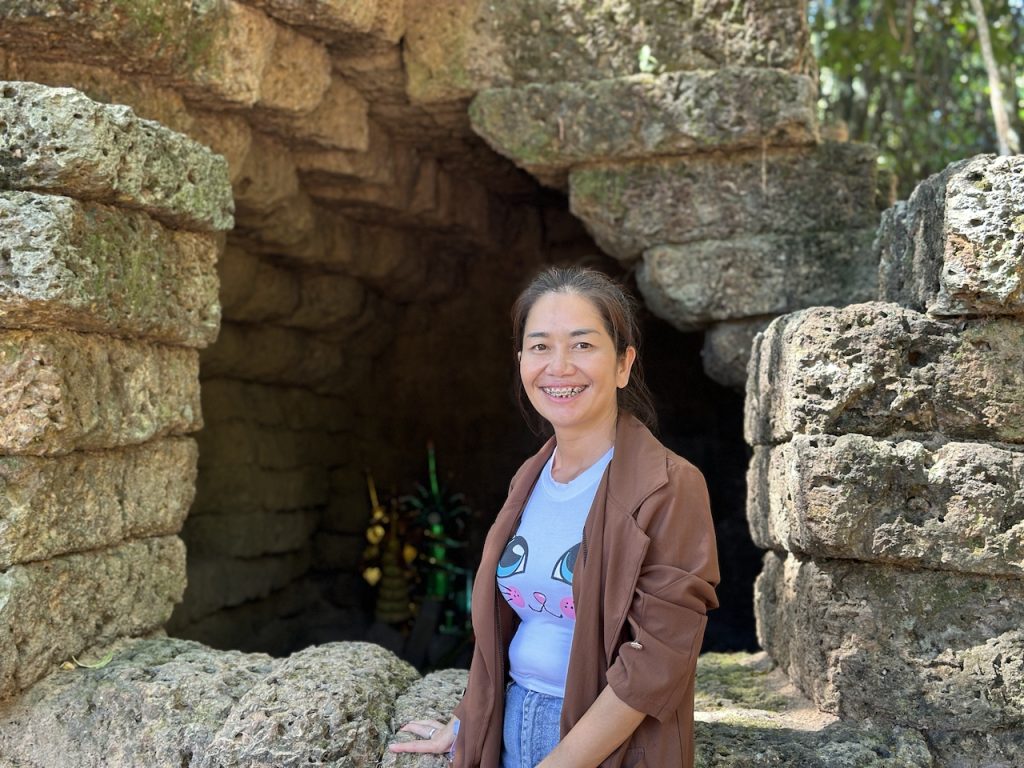
The second temple that we visited was originally constructed on an artificial island in the middle of a lake. The water had drained long ago and the area was dry until a few years ago, when they realized the significance. The pressure of the water helped to secure the foundation in place to bear the weight of all that stone. Without the water, the stone had slowly sank. In addition, LIDAR and other modern scanning techniques showed the intricate irrigation channels that extended from this lake in all directions, thought to aid farming year round. This island temple was built with a main pond or tank of water in the center around the main temple. In each of the four cardinal directions, a smaller tank/ pond existed representing each of the four elements of fire, water, earth and wind. This made a cross, a common symbol of medical or first aid even today. The link between the main tank and smaller tanks was a stone carving of the animal that represented that element. This was set up as a medical treatment for royalty, basically a hospital to help heal the “very important” people by placing them relative to the element that they were thought to be missing, then tending to them as the element re-entered their bodies. At the time, one person might be the only “patient” at this center, as each of the four sections would only heal one person at a time. Later, it was discovered that there are two snakes underwater that wrap around the center column, similar to the two snakes coiled around a staff, thought to have a protective effect. In the dry season, when the center water drains away, medicine men from far and wide come to harvest the thousands of plants, some of which can’t be found elsewhere, that grow in and around these water tanks even to this day.
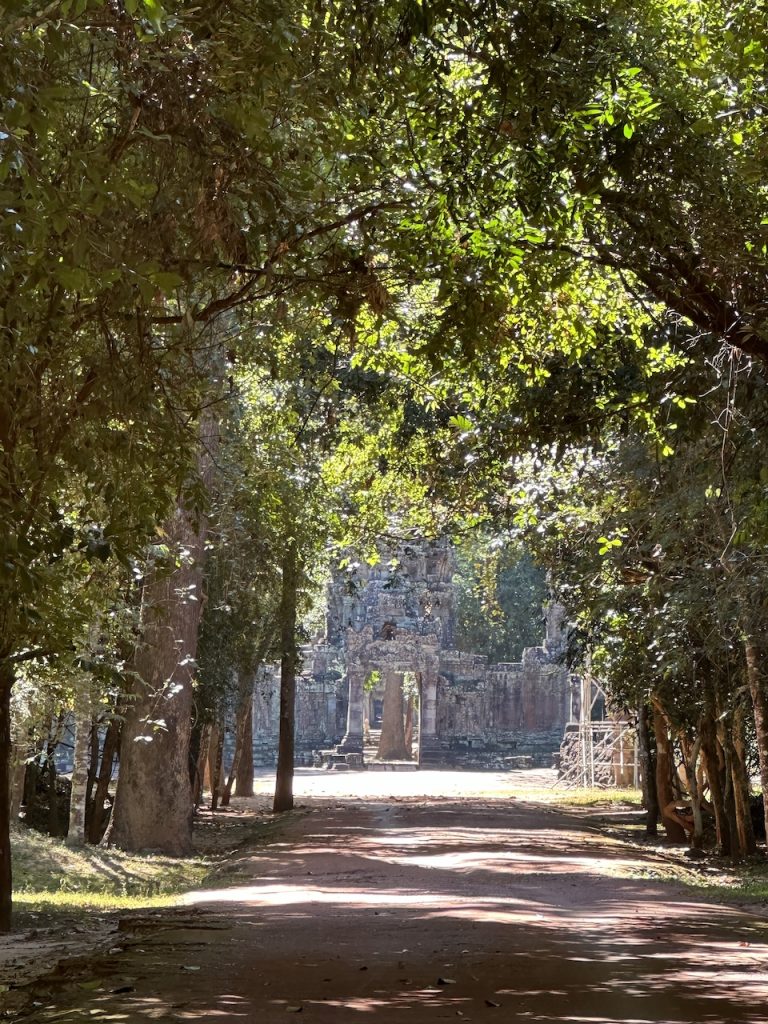
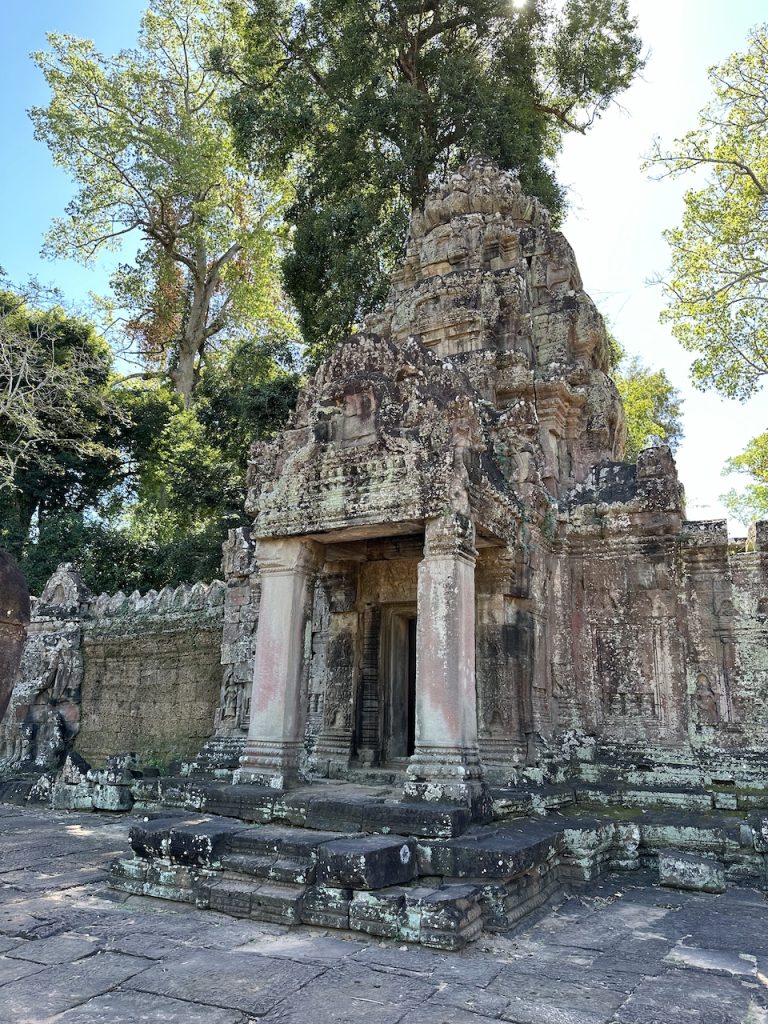
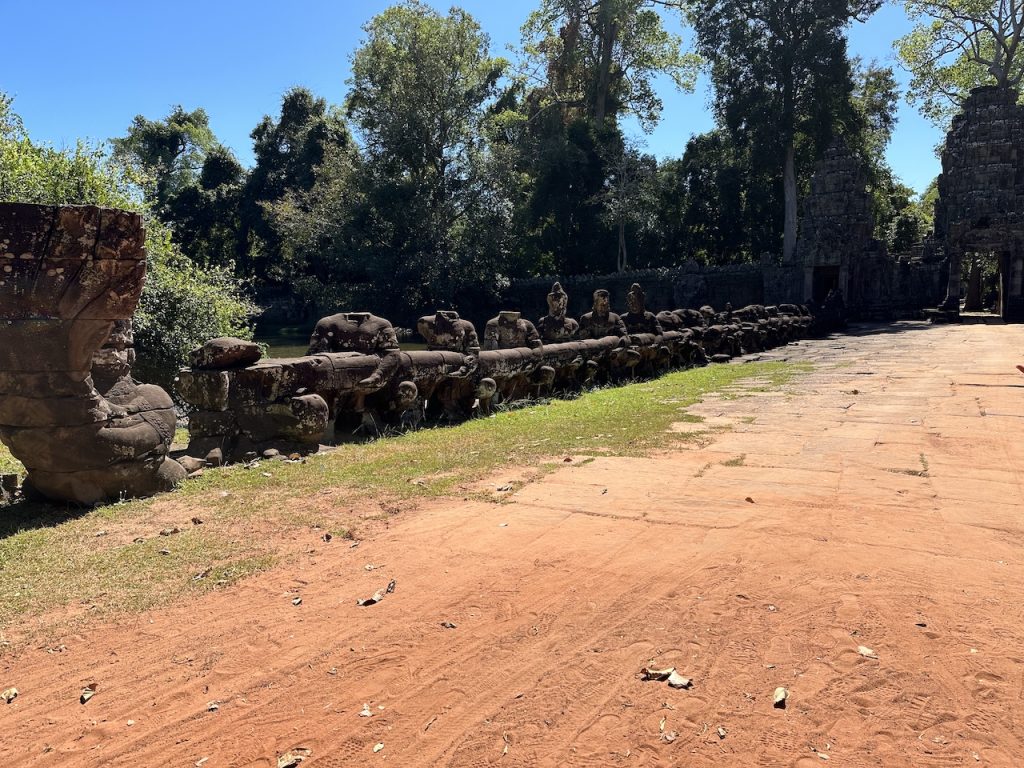
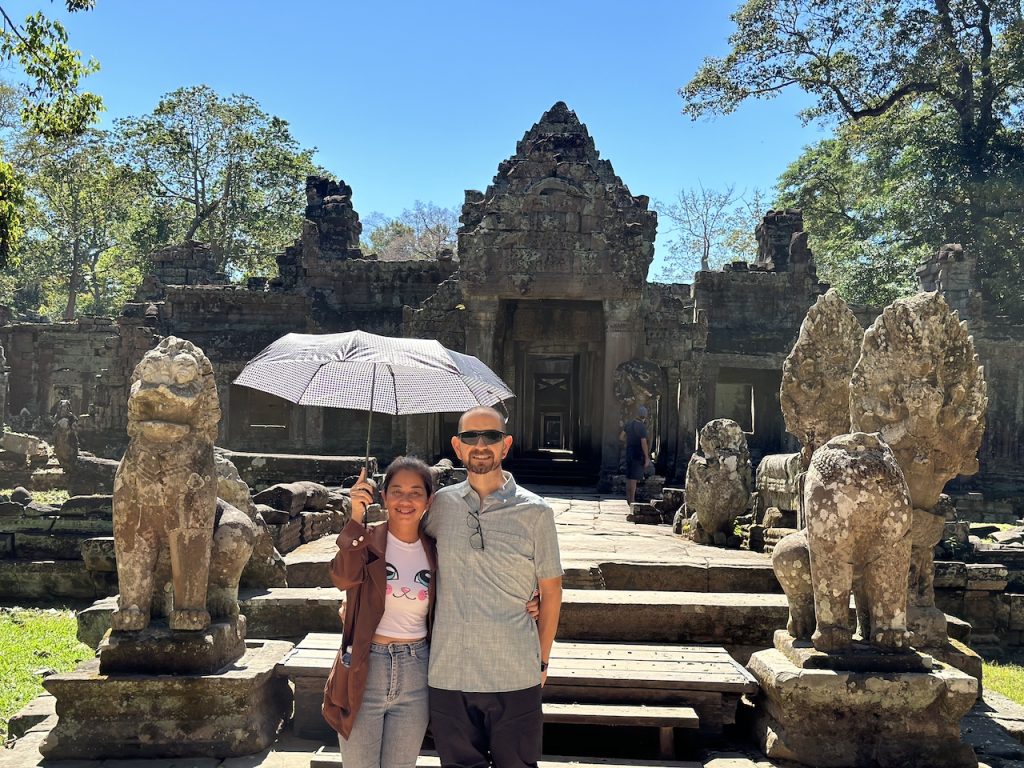
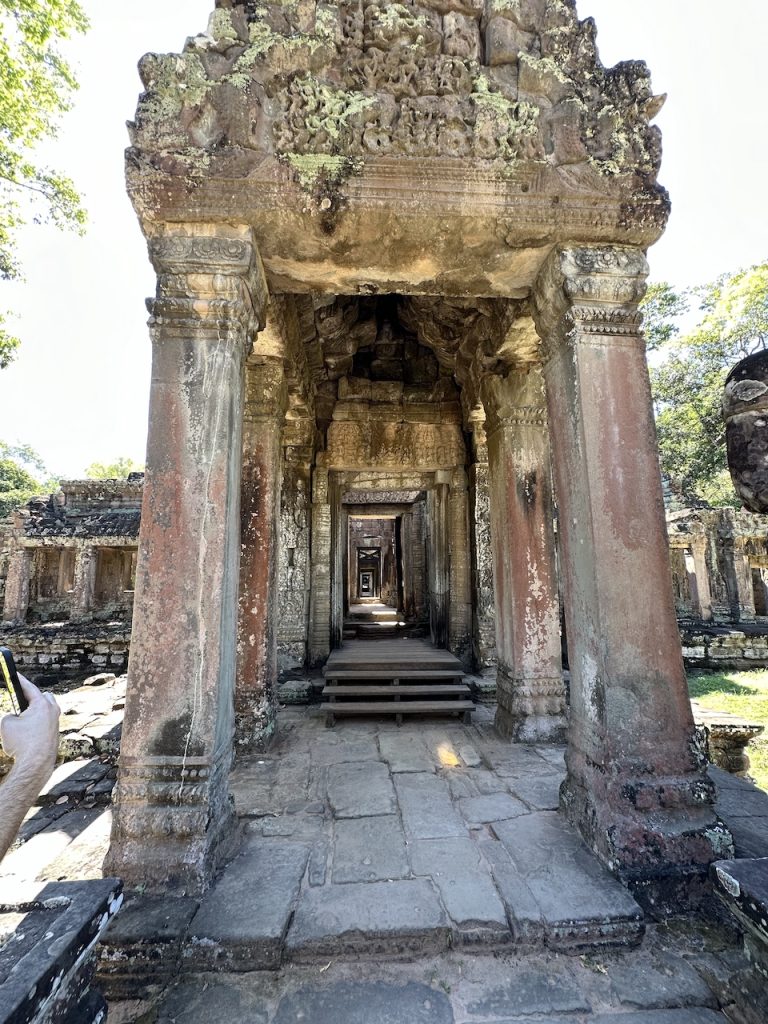
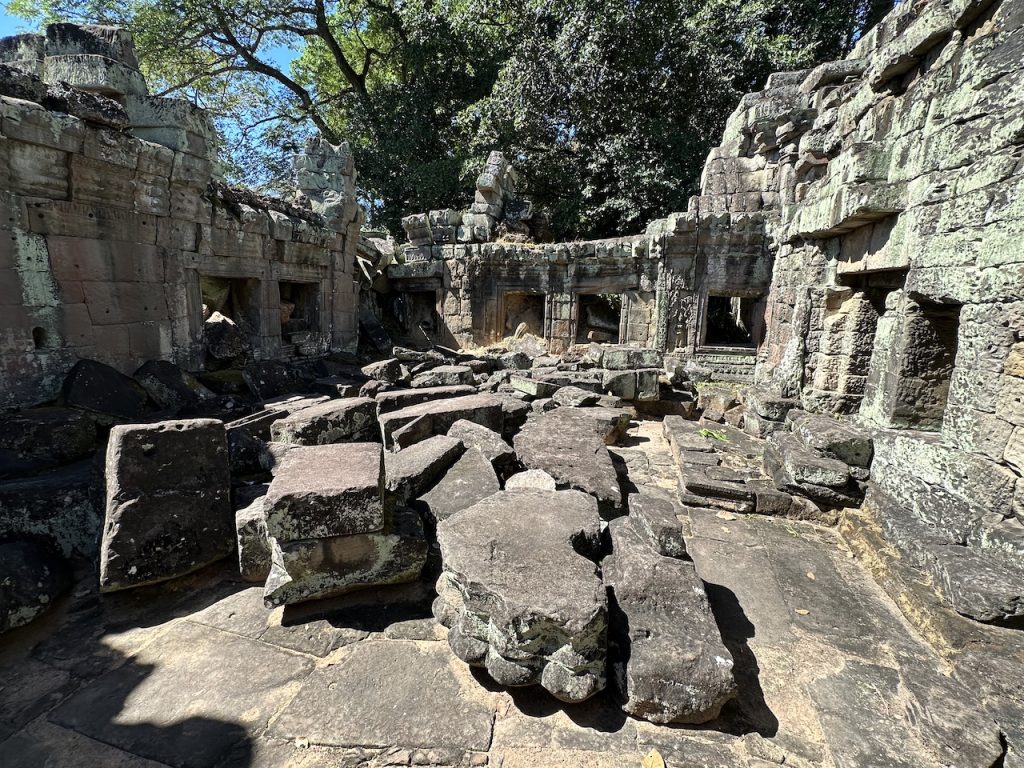
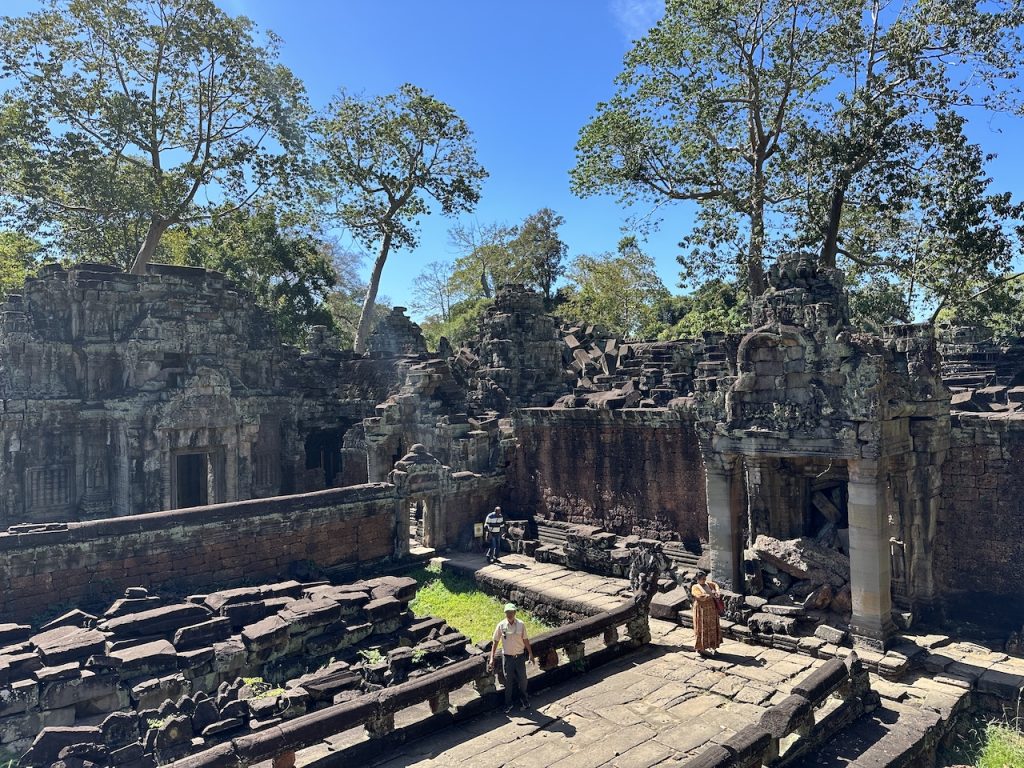
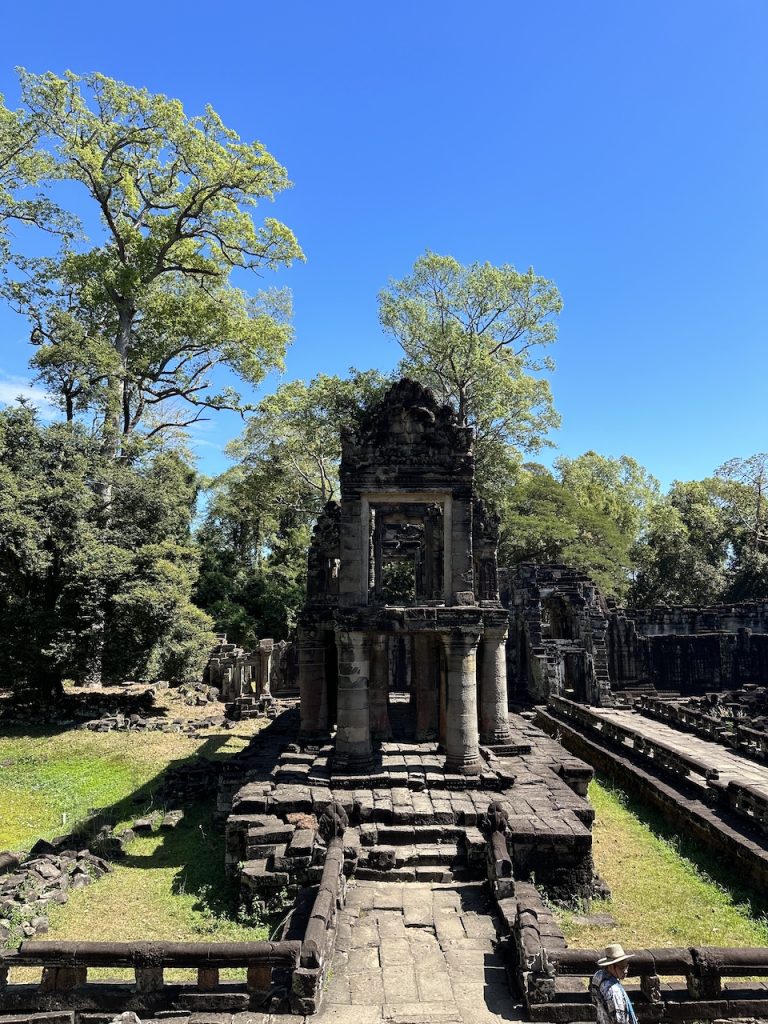
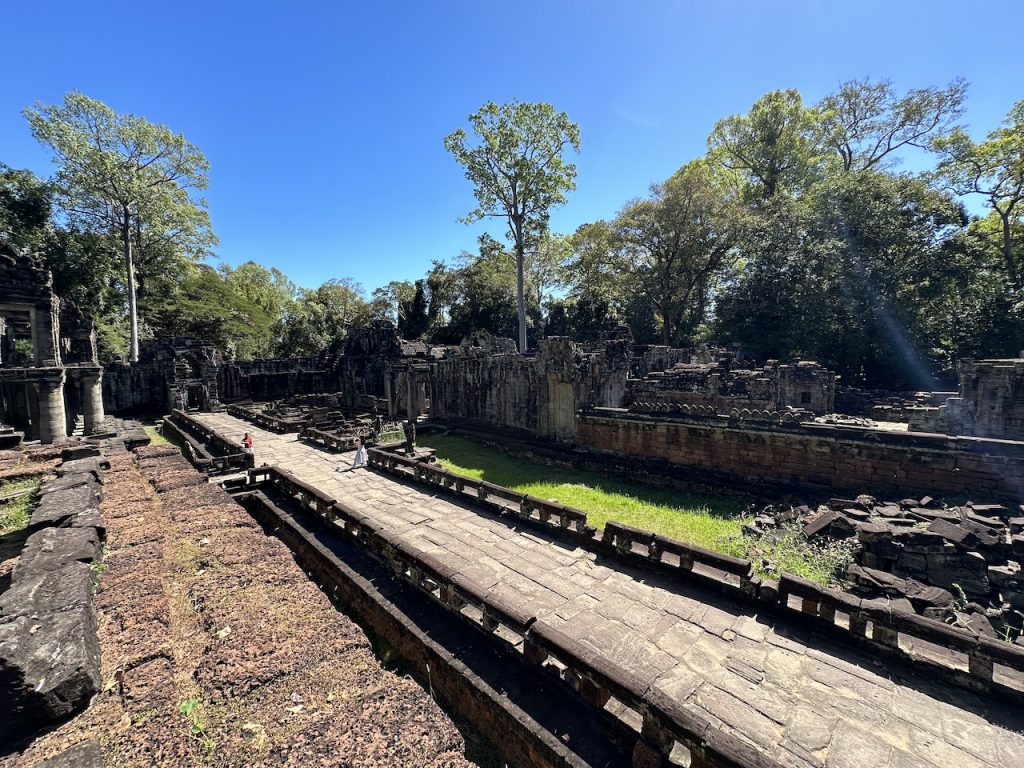
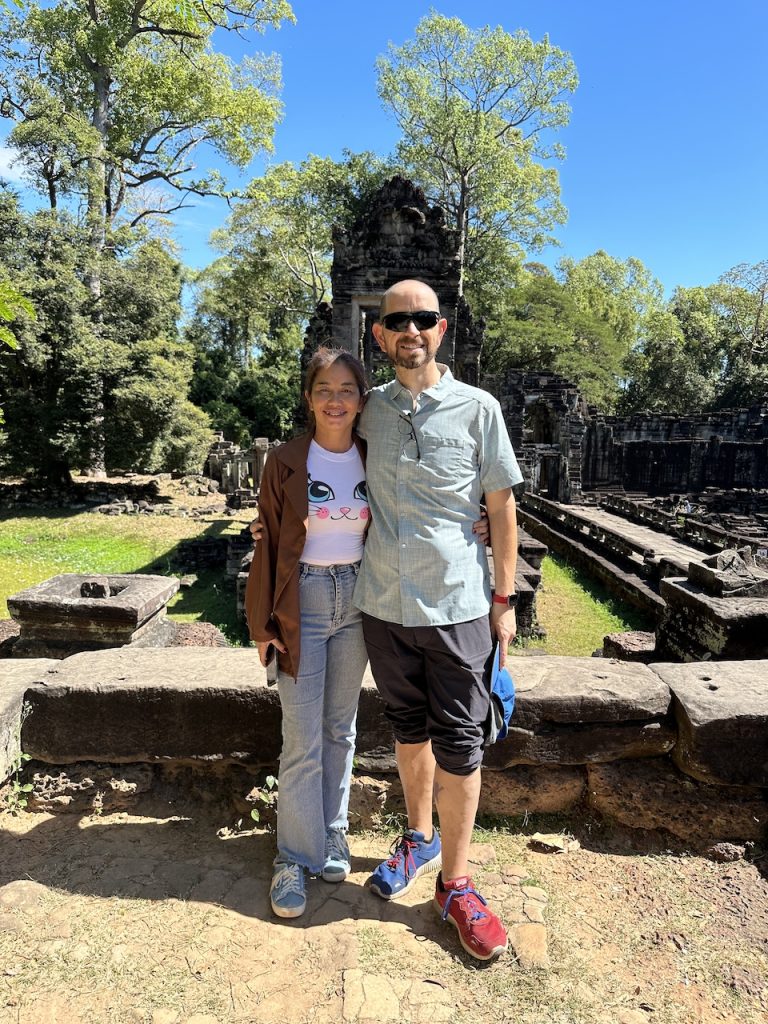
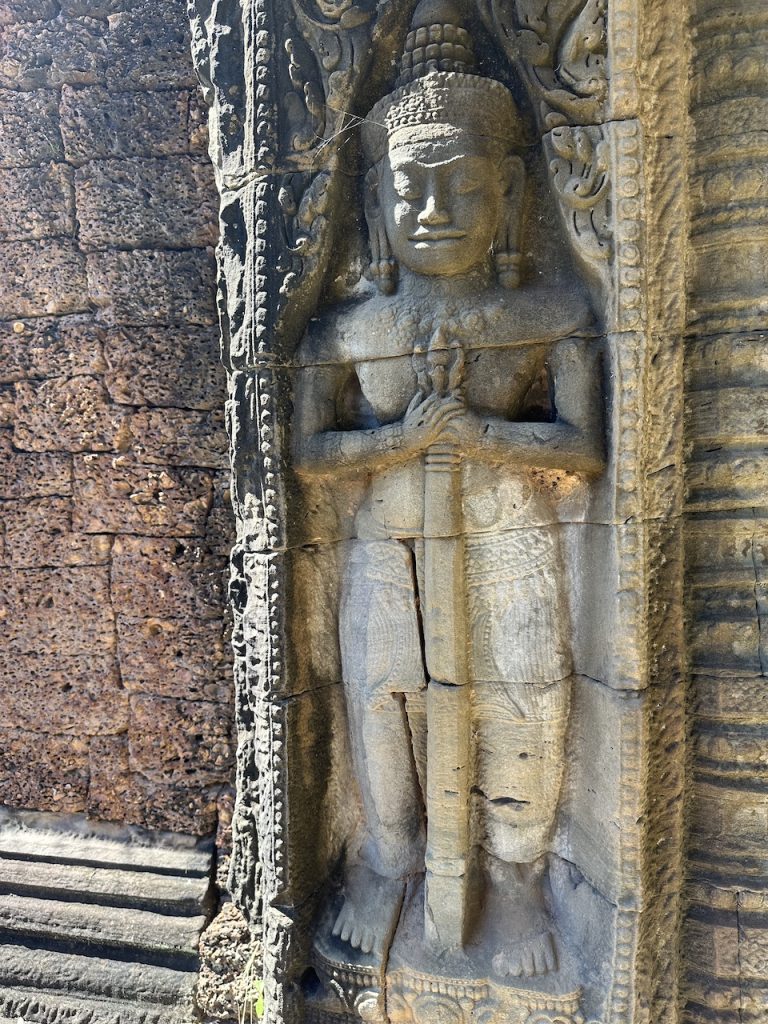
The next temple was much larger, measuring 1km by 800m, designed and built originally by the Buddhists. Each entrance hallway had successive doors with floors that raised, sides narrowed, and tops lowered. It was thought that evil spirits were kept out by the raised floors, while the lower ceilings to the doors encouraged the monks to bow their head a little lower as they neared the center. This was all part of elaborate rituals to help cleanse the person as they worked toward enlightenment and meditation. Off of each hall were many rooms placed for meditation and reflection. The entire structure was enormous and made me feel small as we navigated our way through.
The last temple for the day was a 45 minute drive away, which gave us a chance to cool down and drink some water in the air conditioning. Before heading to that temple, though, we stopped at a restaurant for some local cuisine. I enjoyed the open air concept, where we were seated at a table off to the side from the main dining room. I ordered the Chicken Amok, a local dish, sort of a curry soup, served in a coconut shell. I couldn’t get enough of it, it was so delicious! Lunch gave everyone in our tour group a chance to learn more about one another, share our travel plans, and compare stories. After lunch, we took a short drive to the last temple, a scaled down version of Angkor Wat, which we’ll see tomorrow. This one was built out of pink sandstone, which was quarried locally and too cumbersome to haul closer to the Angkor city center where most of the other temples have been found. The detail in the carvings was intricate and better preserved than many of the other temples, and the naturally pink sandstone made it really stand out.
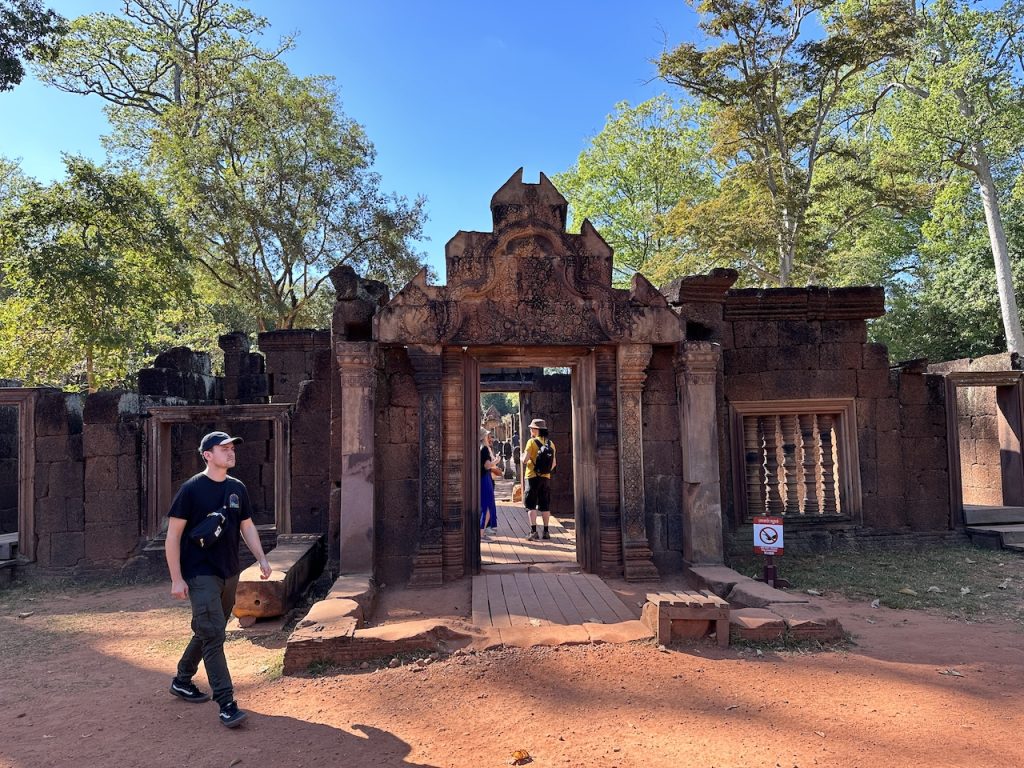

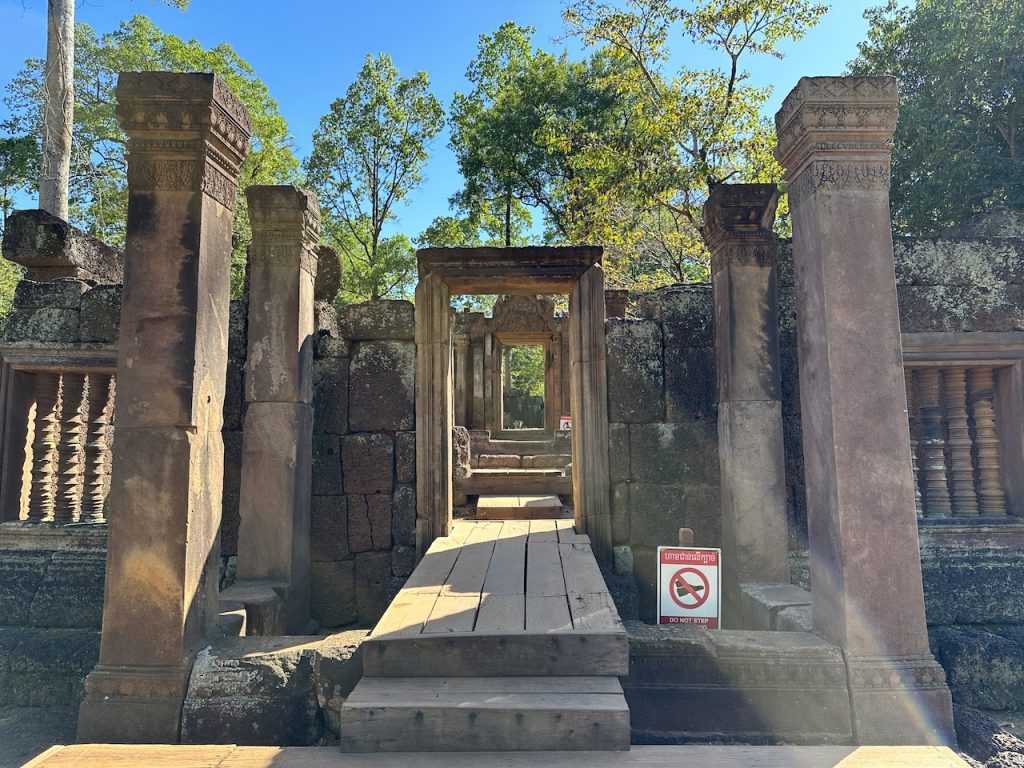
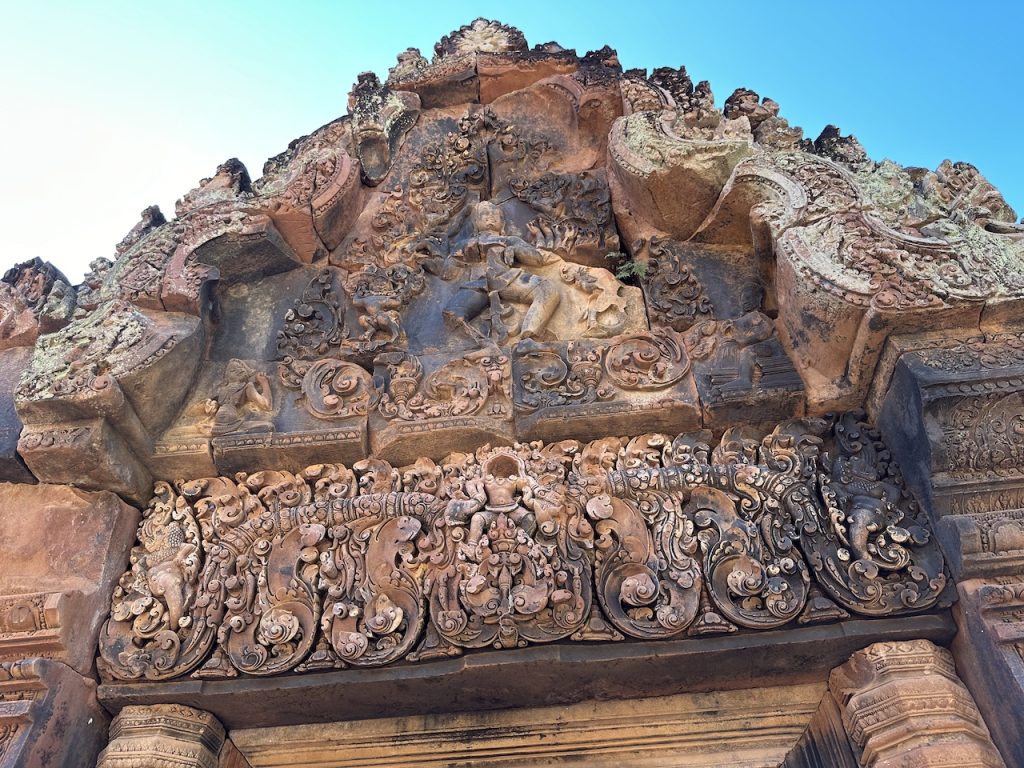
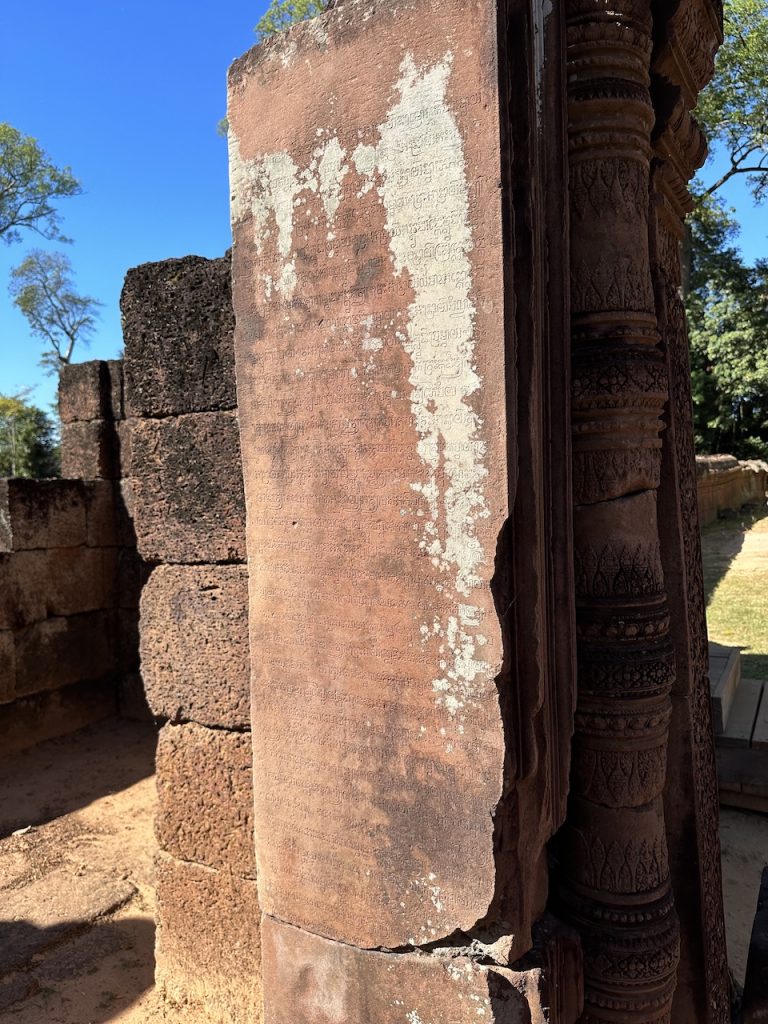
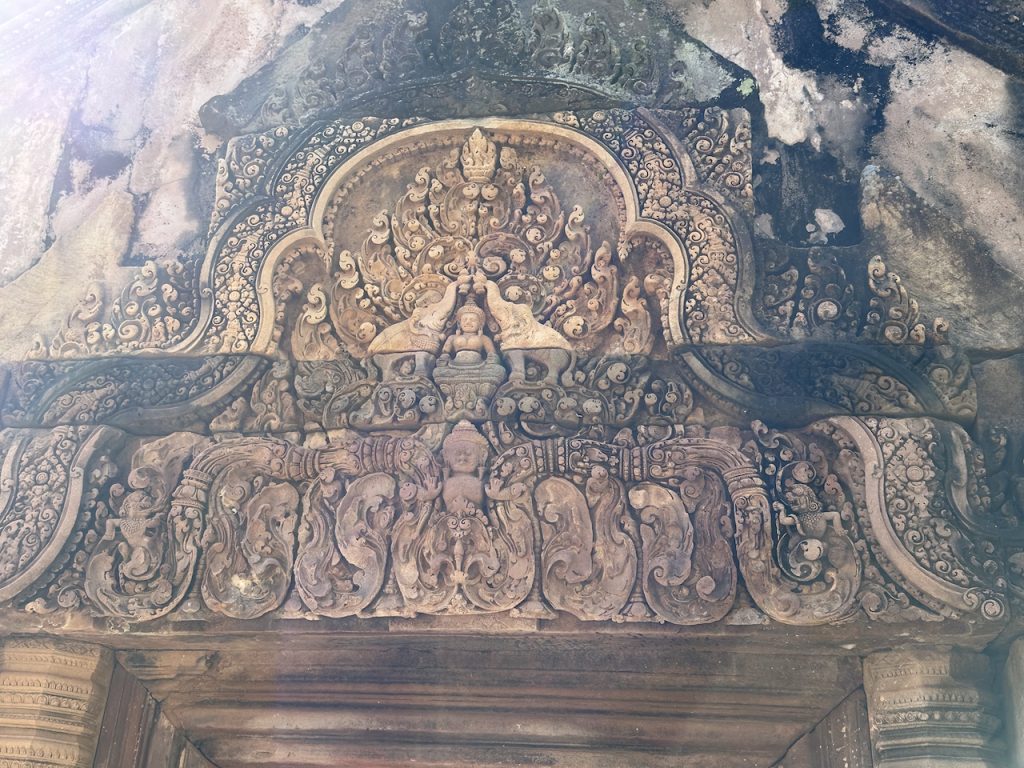
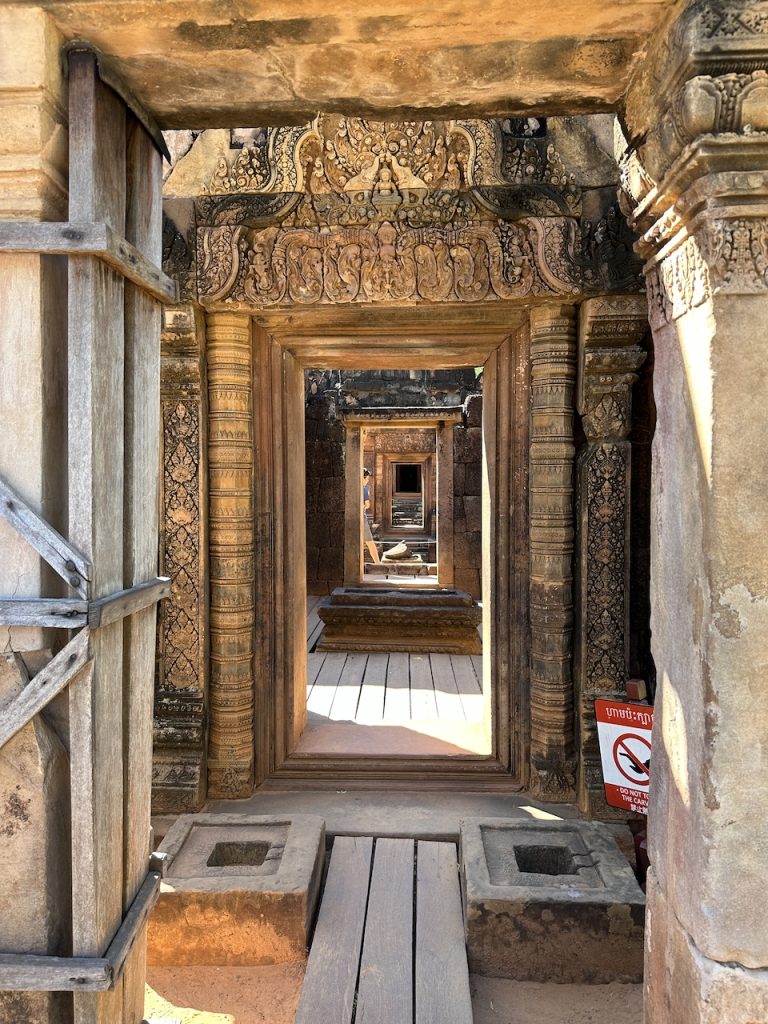
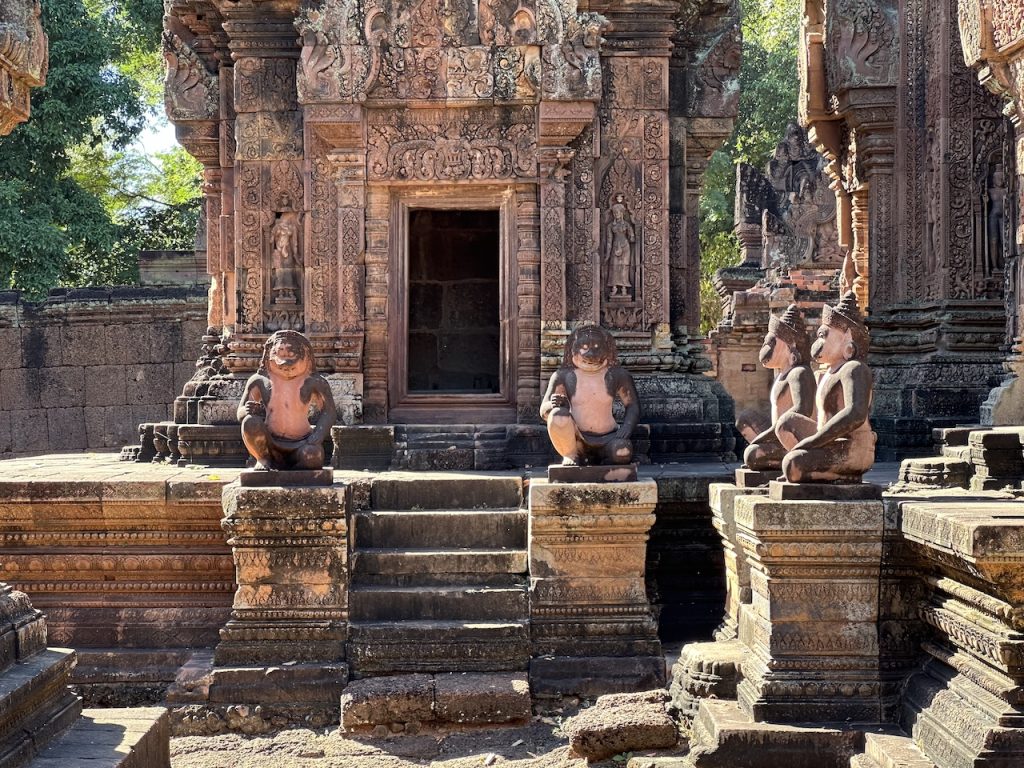

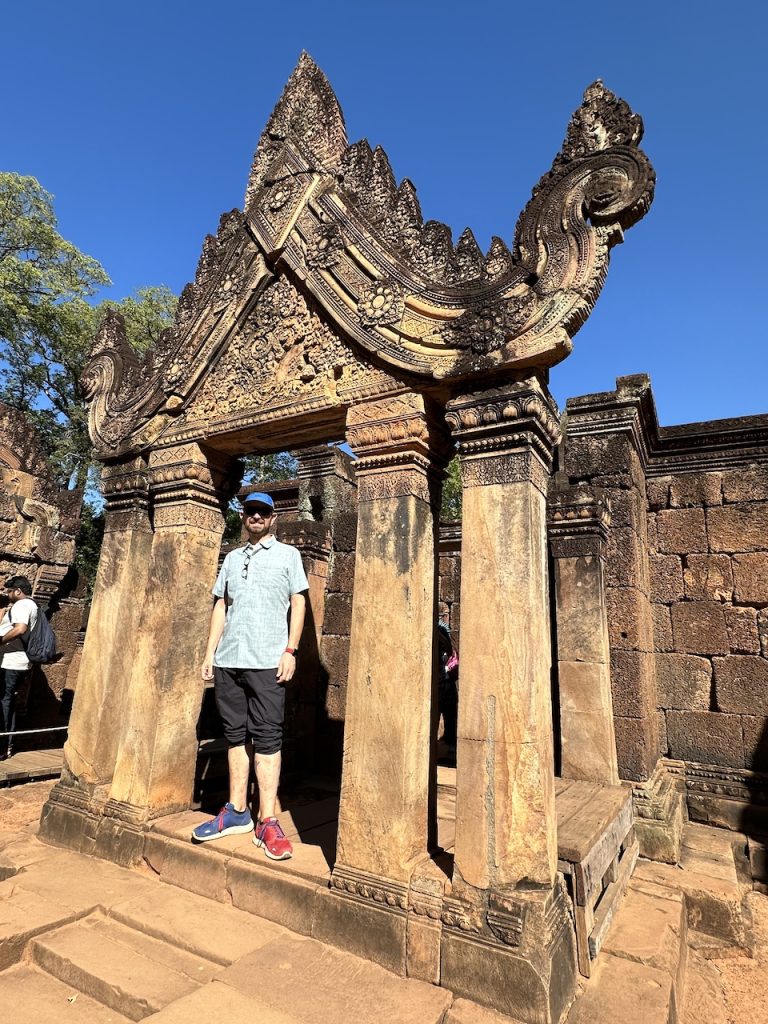
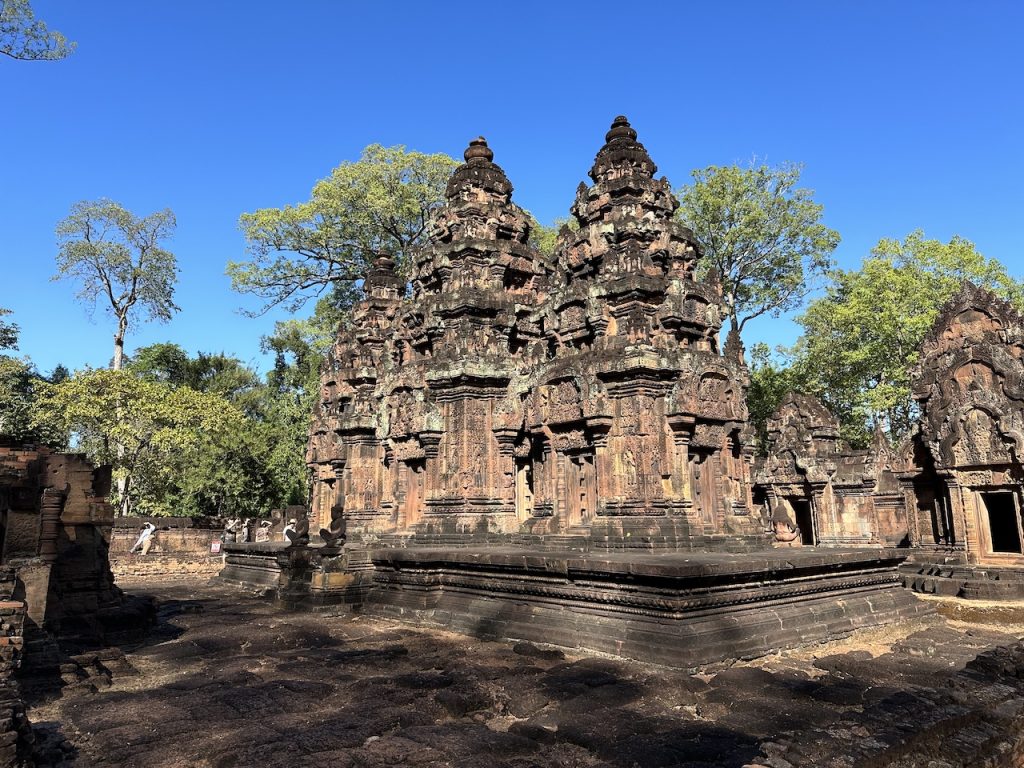
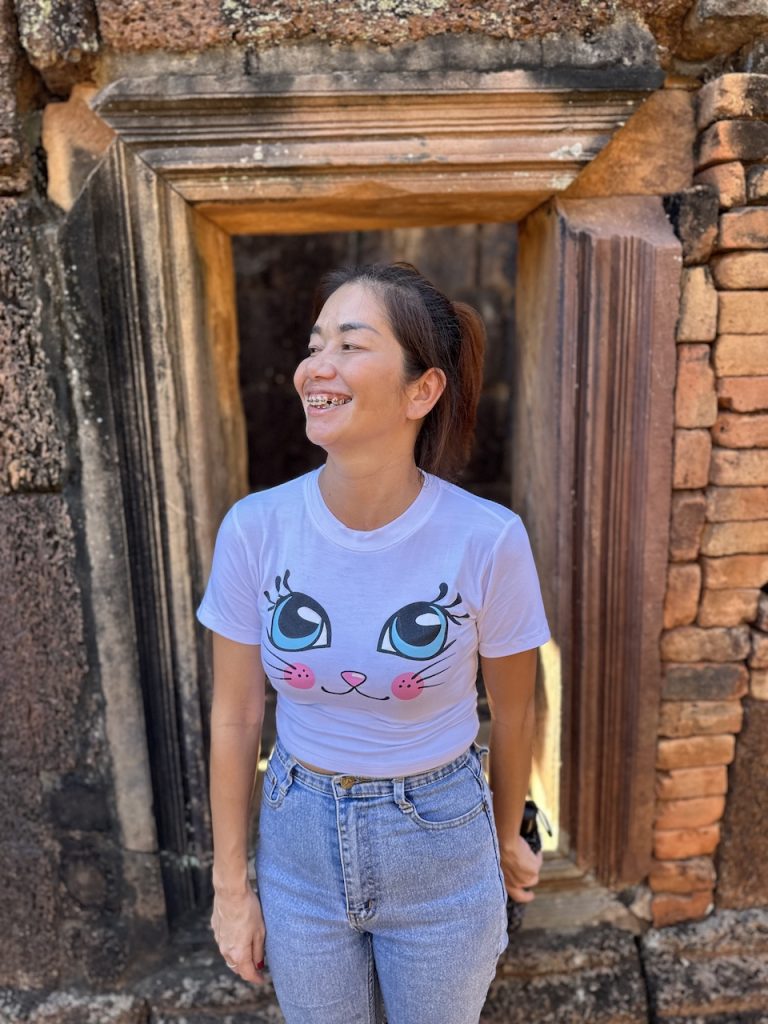
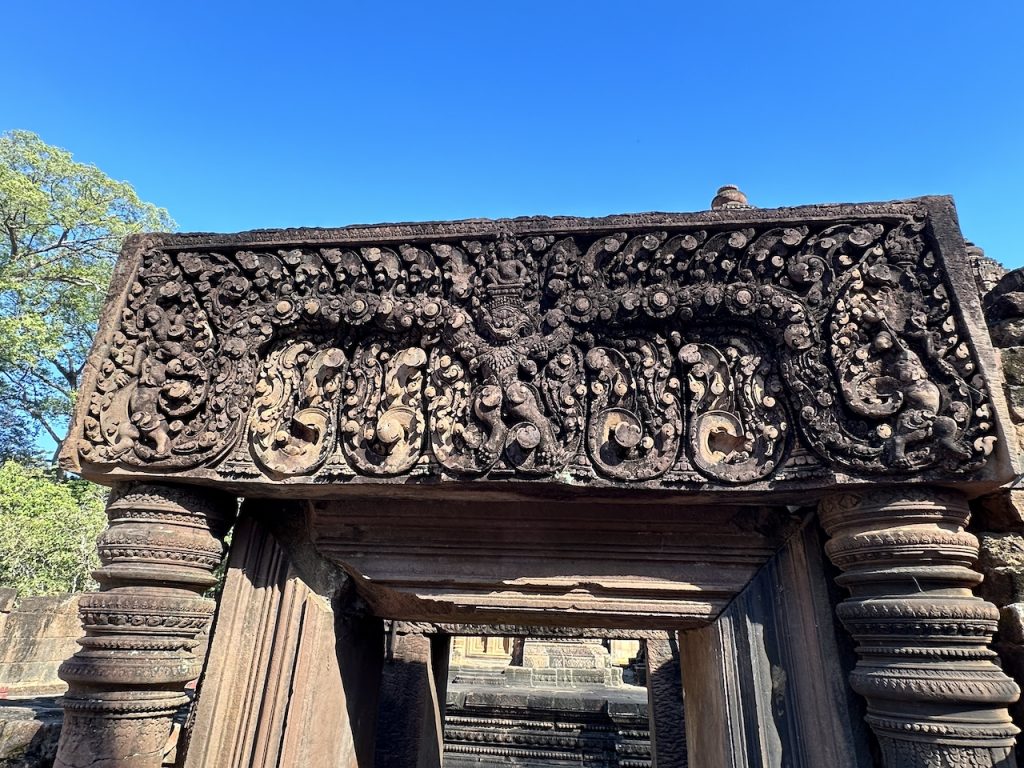
Of course, in every group, there is that one guy (or lady, but usually a guy). In our tour group, his name was Brian. When everyone else stood next to each other so we could all get the picture without being in each other’s, Brian was the douche that stepped in front of us and took a close-up pic of some detail or just in front to get a slightly closer shot then stood there playing with his phone camera and getting a thousand shots instead of being considerate. When Zac, our tour guide, told us to be back in 20 minutes, Brian would show up 30 or 40 minutes later. When we were at a meeting point or bus, Zac counting heads to make sure he didn’t forget anyone, it became a running joke amongst us that Brian was the one missing. I don’t think he meant any harm. He wasn’t rude. He just had no idea about tour group unspoken rules, and treated it like a private tour where he didn’t have to give thought to anyone else’s timeline or enjoyment. Most of our tour group were European or Asian, and just patiently waited while he was rounded up or got out of the way so they could get their photo. Honestly, I was like that for much of my life. Lately, though, I’m different. When Zac was looking for him, I’d yell “Hey Brian! If you can hear me, come to my voice so Zac will stop worrying about you!” When we were all trying to get a picture and he stepped in front, I’d say “Hey, Brian, you’re in our shot. Step back!” to which he’d immediately step back and apologize. Like I said, good guy just not aware of other people.
After the pink temple, we were all beat. Zac asked if we wanted to stop at the landmine museum but the bus voted it down. I would have liked walking through, but I was also okay with just getting back to the hotel. We took the long bus ride home, where I was glad to be one of the first dropped off. We showered and napped, then decided to just lounge around and order room service instead of fighting the crowds out in public. Satisfied but exhausted, we were asleep early.